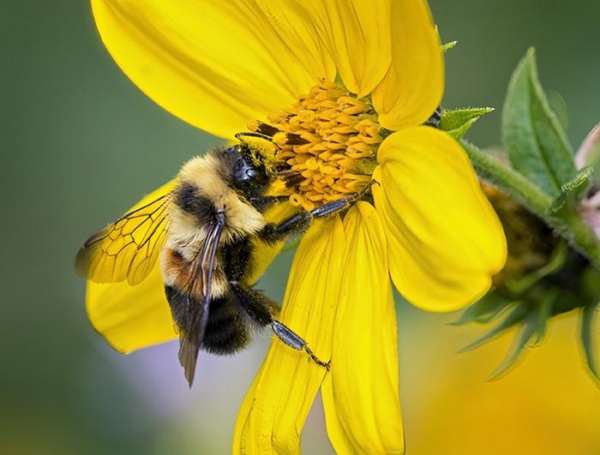A detailed, high-resolution map of the rusty patched bumble bee's genome has been released by U.S. Department of Agriculture (USDA) Agricultural Research Service (ARS) and U.S. Fish and Wildlife Service (USFWS) scientists, offering approaches for bringing the native pollinator back from the danger of extinction.
Putting together the rusty patched bumble bee genome is part of the Beenome 100 project, a first-of-its-kind effort to create a library of high-quality, highly detailed genome maps of 100 or more diverse bee species found in the United States. Beenome 100 is a collaborative undertaking of ARS and the University of Illinois. The expectation is that this library will help researchers answer the big questions about bees such as what genetic differences make a bee species more vulnerable to climate change or whether a bee species is likely to be more susceptible to a pesticide.
The rusty patched bumble bee (Bombus affinis) is an important pollinator of bergamot (Monarda fistulosa), milkweed, and other wildflowers, as well as crops such as cranberries, plums, apples and alfalfa. But in the last 20 years or so, its population is estimated to have declined by 87 percent.
Read more at: US Department of Agriculture
Rusty patched bumble bee (Bombus affinis). (Photo Credit: Clay Bolt)


